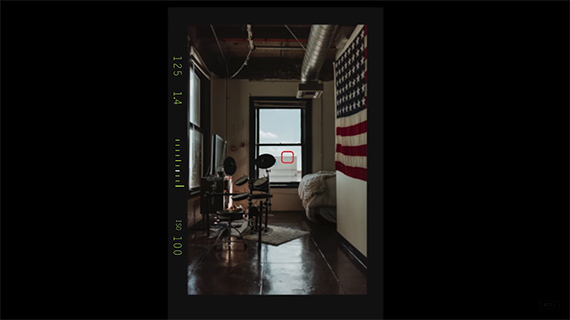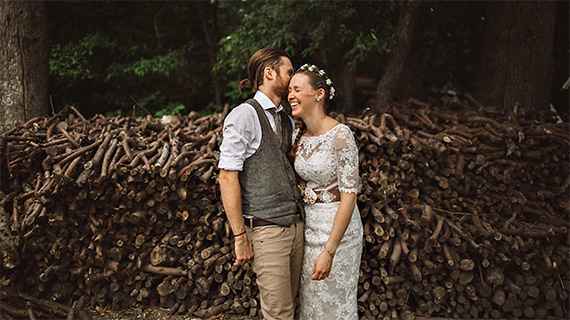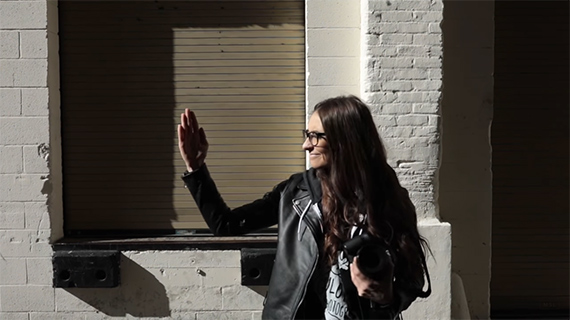When you’re starting out with any new skill, you’re bound to make plenty of mistakes. Photography is no exception. This video points out three common mistakes that most beginner photographers make. But the tutorial goes beyond pointing out mistakes and provides simple techniques to overcome them:
1. Blowing out highlights
Many new photographers expose for the shadows and therefore blow out the highlights. When you blow out the highlights you lose details that can never be recovered during post-processing.
Solution: Expose for the highlights.

Expose for the highlights.
Instead of exposing for the shadows, expose for the highlights. Focus on a point that falls in the highlight zone (as demonstrated in the image below). Now, adjust the exposure by balancing the meter on your camera to ‘0’. You can then refocus on any point in the frame (if needed) and make the exposure.

Meter for the highlights.
When you expose for the highlights you retain the details in these areas. The above technique will produce a properly exposed exterior with an underexposed interior. Shadows, however, can always be pulled during post-processing. This ensures maximum dynamic range in your photos.
The only downside to this technique is that in some cameras, noise creeps in when you pull the shadows. If your camera cannot handle noise well, use your best judgement.
2. Posing instead of directing
Posing is something that almost every wedding and portrait shooter indulges in. As Rachel and Daniel show, there’s nothing wrong with posing. Except, that in some cases it becomes a bit of a clichéd approach. Pose, as long as it illicits a natural response and a spontaneous flow of emotion, but beware of using so-called “safety poses.”
Solution: Direct your subjects.
Directing isn’t just about micromanaging your stiff models and trying to produce images you’ve seen on Instagram. Instead, try to get your subject to portray an emotion.

Direct rather than pose.
Couples are probably a bit easier to get into a pose. Play some music and ask them to dance. Have them whisper something wildly inappropriate in each other’s ears. Go with the flow.
3. Disregarding the light source
One of the cardinal mistakes committed by beginner photographers is ignoring the light. Instead, they scout for the perfect location. For natural light photographers, the sun is the only source of light and that means it cannot be disregarded. The timing of your shoot is as important, if not more, as the location.
Solution: Seek out the perfect light.
If the timing of the shoot is in your control, choose the golden hour. This is the time of the day when the light is more or less even and shadows are non-existent.

Seek out the best light.
Golden hour, however, is limited. It only offers a narrow window of opportunity. If you find yourself caught under the mid-day sun, try to look for some shade. Shade provides you with a consistent light and shadows that aren’t harsh.

Use your hands to find the best angle of light.
One way to find and position your model under the sun is to first raise your hand and rotate it around your body. Watch how the light is hitting your hand. Look for the angle where your hand is most evenly lit. You can figure out how to position your subject accordingly.
I hope these simple to use tips will help you improve your natural light photography.
Like This Article?
Don't Miss The Next One!
Join over 100,000 photographers of all experience levels who receive our free photography tips and articles to stay current:






Great article. I am getting into shooting 35mm film. It’s something I did for fun a long time ago, and my older daughter, who is quite the artist, has rekindled my interest. I look at it as something we can do together. I picked up a couple of Pentax ME bodies and lenses and have been shooting around the house and at work. (working for NASA has a couple of perks)
It’s hard to switch from shooting on my phone, (Google Pixel) which has a great sensor and does everything for me. To using a camera that is older than I am and I am in charge of most of the settings. I am still working through my first roll of film, so not sure how it’s going to turn out. I am not expecting great things, but it has been fun getting a new skill.